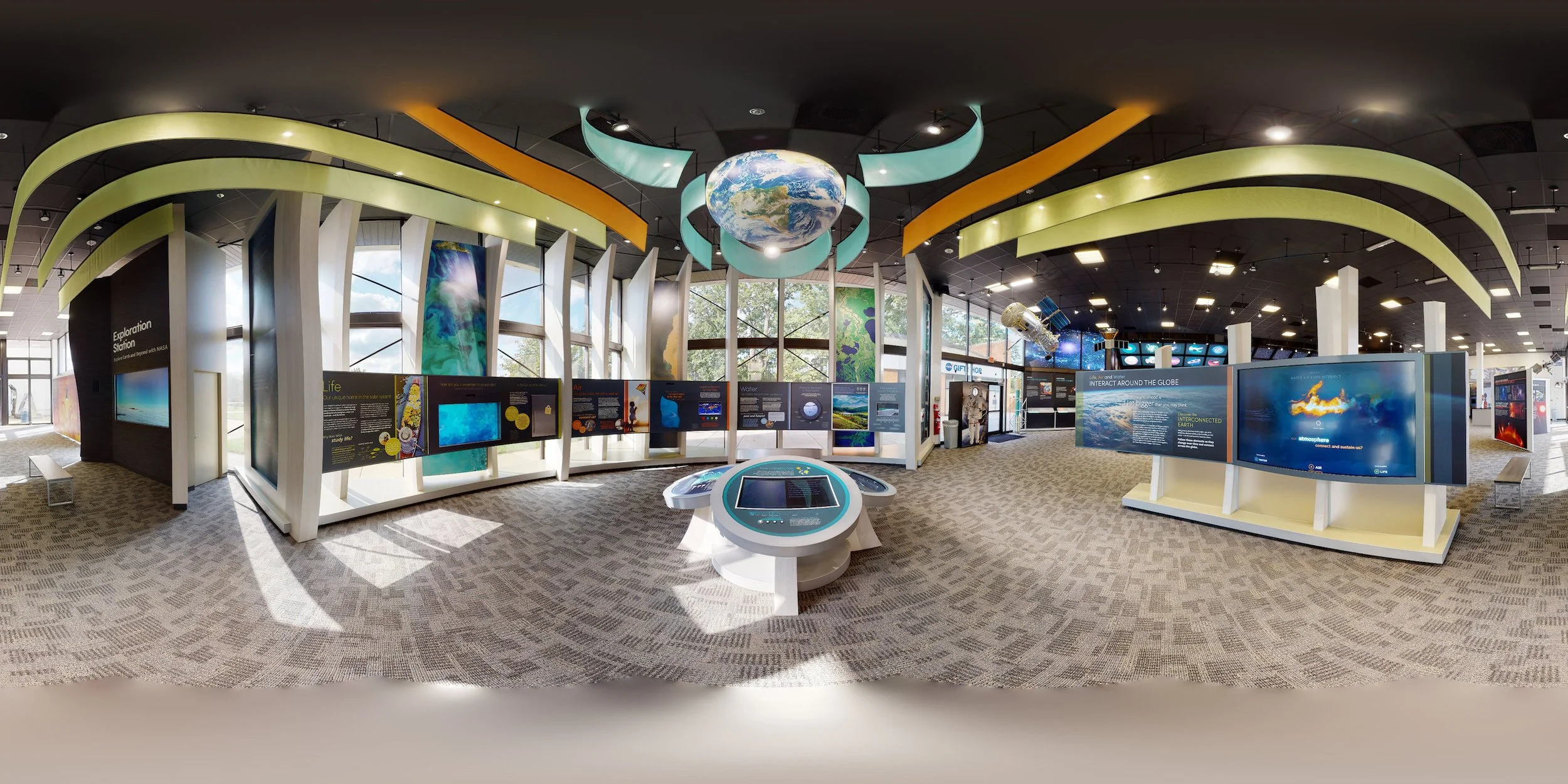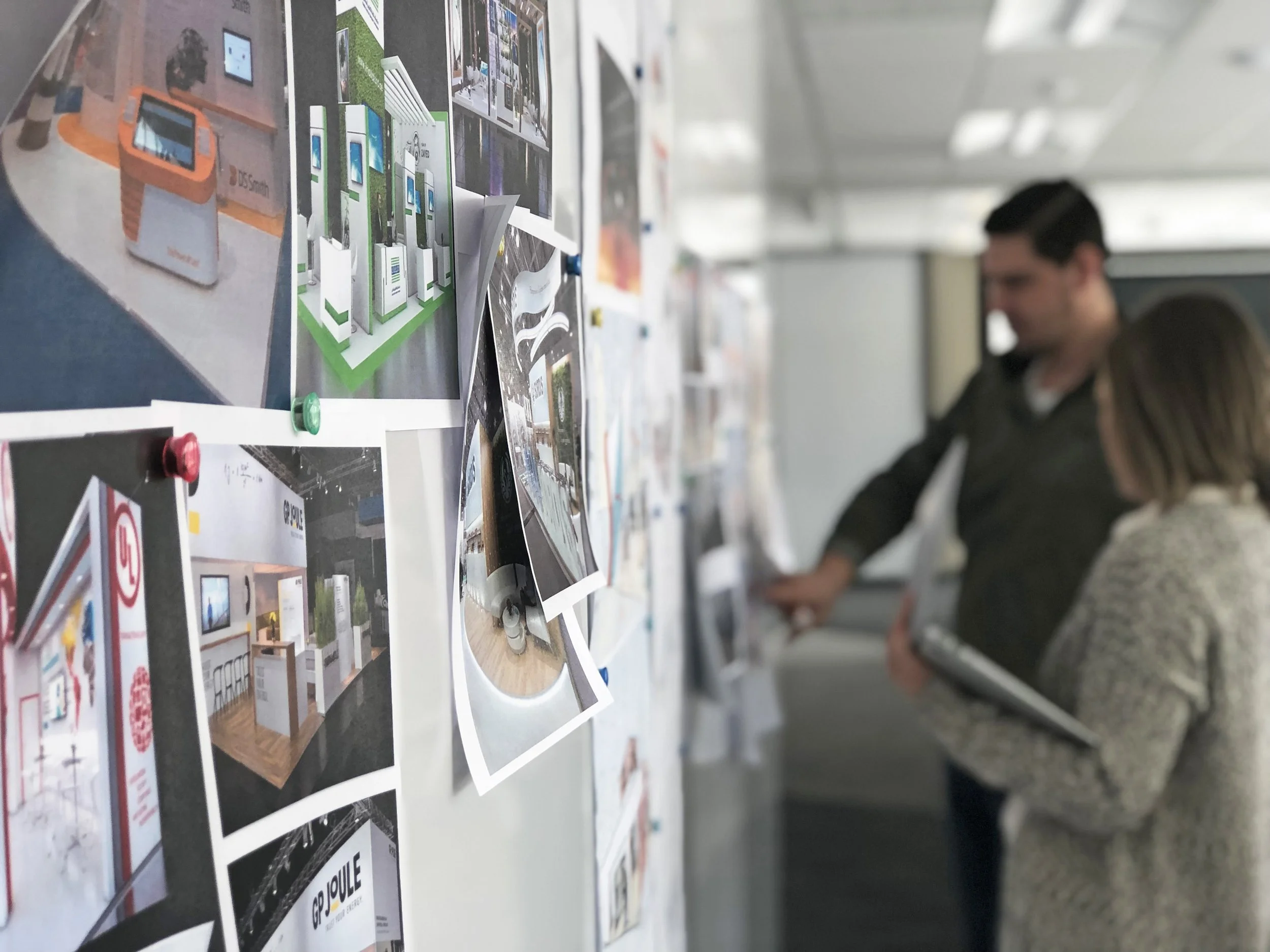From the Cleveland Museum of Natural History to the Buckland Museum of Witchcraft and Magick, Northeast Ohio is a museum mecca. Much like our local spots, the most memorable places of learning offer multiple points of engagement for visitors. They take a lesson from pedagogical principles: People have different ways of learning, so get their attention through visual, kinetic, auditory, and reading styles—simultaneously.
Comprehensive visual storytelling isn’t just adding in a simple graphic or throwing together a quick video, it’s designing a tailored experience for your end users that utilizes all four learning styles. Here are a couple reminders for when you’re telling your next visual story through a designed experience.
Use traditional storytelling tenets within your visuals.
While we can take the traditional “beginning, middle, and end” story format into visual storytelling, we also have to be acutely aware that there’s not a set path for everyone. Think of visual storytelling as a Choose Your Own Adventure book. You can’t predict how someone will walk through your visitor center. They might run up to a brochure display before checking out an interactive video wall or vice versa. Your story has to work in (almost) every way to properly communicate your vision.
Double check your connection between your visual story components.
There should be a clear connector between everything in your space, whether you’re developing a trade show booth experience or a history wall in your office. Think about your brand story and how that can be communicated. You’re more than just a static logo, your company is a collection of stories that will drive your visuals. So if you have a photosynthesis exhibit next to a display on kinetic energy at your science museum, your visitors should be able to understand at a quick glance why that’s the case.
Consider the psychology of storytelling.
Empathize with your customers. When you’re building your trade show booth, physically or virtually walk through it. Identify the ways people will connect with your message; they won’t resonate with your story unless it solves some type of problem for them. Do your secondary research but also don’t be afraid to ask your audience(s). Then create what they want. Test out different visual storytelling techniques they recommend to you; monitor your creations with web analytics and in-person calculations; and adjust as you go.
Find ways to get them talking about the experience you’ve created.
Visual stories prompt people to communicate, and that dialogue is crucial for keeping people engaged. The Immersive Van Gogh Exhibit shook up the way people viewed art. While interactive visual displays aren’t a new concept, stepping into artwork was a new spin on things, and many tickets were sold because of word of mouth. You can replicate that type of buzz by encouraging people to share their experience in multiple ways: in-person displays with social media-friendly areas, easy-to-share quote pop-ups in webinars, or giving them a behind-the-scenes peek into how you created an experience.
Find the right mediums for your visual stories.
When you’re figuring out what types of visual stories to create, really get to the heart of what you want to communicate. If you’re the head of HR for your company, consider what your employees want to see when they come back to the office. Come up with ways to get them excited through an interactive lobby display, for example. And brainstorm what wouldn’t work as well. A trade show booth setup might be more enticing with a VR headset than a looped video; a streamlined pop-up display could be easier to digest rather than a product book.
Write your story in addition to the visuals.
Visual stories have to have written components as well for accessibility. These not only allow you to reach everyone within your target audience but this practice also helps you to catch inconsistencies and factual errors before your event, museum exhibit, or otherwise goes live (virtually, in person, or both). Transcribe your videos, make sure pictures have descriptions, and figure out ways to communicate sound and taste—when applicable—for a holistic experience.
There’s a ton of content out there, so make yours worthwhile.
No matter what you create, something similar has been done before. And rather than ignoring that or fighting it, make your content more engaging instead. Having a multi-faceted visual story gives you the highest chance for something to stick with your target audience(s).


